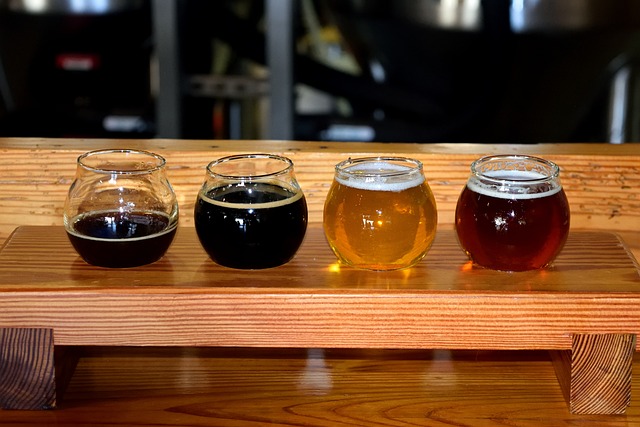
How Much Money Does the Average Brewery Make in a Year?
The craft brewery landscape has exploded over the past few decades, painting a vibrant picture of local entrepreneurship and innovation. With over 8,000 breweries in the United States alone, many aspiring brewers are contemplating taking the plunge into this popular industry. As with any business, understanding the financial prospects is crucial for anyone thinking about opening a brewery. In this post, we’ll delve into the economic realities of running a brewery, shedding light on how much money the average brewery makes in a year.
The Breweries Landscape
Before we dive into the numbers, it’s essential to appreciate the breadth of the brewery scene. Breweries come in various shapes and sizes, from microbreweries that produce a few hundred barrels annually to major regional producers fiendishly pumping out millions of barrels. The average earnings will significantly depend on the type, size, and market positioning of the brewery.
Types of Breweries
Breweries can generally be categorized into the following types:
1. **Microbreweries**: Typically defined as breweries producing less than 15,000 barrels of beer per year, these small-scale operations often emphasize quality, flavor, and unique brewing techniques. Many microbreweries also have taprooms that contribute significantly to their income.
2. **Brewpubs**: These establishments brew beer primarily for sale on the premises, combining a brewery and a restaurant. Brewpubs can potentially generate the highest revenues due to food sales alongside beer.
3. **Regional Breweries**: Regional breweries produce between 15,000 and 6 million barrels annually. They start to scale operations and distribution, often leading to wider market penetration.
4. **Contract Breweries**: These breweries do not have their breweries; instead, they pay another brewery to produce their beer. Financial considerations are different here since revenue will depend largely on partnerships and agreements.
5. **Gypsy Breweries**: Similar to contract breweries, gypsy brewers create beer without traditional infrastructure, often utilizing space in existing breweries to brew their recipes.
Average Brewery Revenue
Estimating the average revenue of a brewery depends on several factors, including market location, business model, and production scale. According to various industry reports and surveys:
– **Microbreweries** typically generate annual revenues between **$250,000 and $600,000**. This figure is primarily driven by the sale of beer, often supplemented by merchandise and occasional food sales.
– **Brewpubs** often see much higher revenues, often ranging from **$1 million to $3 million** per year. The inclusion of food sales significantly enhances profitability, and since brewpubs cater to local clientele, they tend to have a loyal customer base.
– **Regional breweries** can achieve annual revenues between **$5 million and $50 million**, depending on their scale and distribution network. The larger the brewery, the better their potential negotiation power with distributors and retailers.
Overall, desk estimates from various associations indicate that a small but efficiently run brewery usually generates around **$1 million** in sales annually.
Factors Influencing Brewery Revenue
1. **Location**: The geographical location has significant implications for a brewery’s financial health. Urban areas may present higher customer footfall and demand, but location costs, including rent and labor, must be factored in. Rural breweries may have lower operating costs but could face challenges in driving customer traffic.
2. **Market Demand**: As trends evolve, consumer preferences play a robust role in brewery success. The craft beer boom has benefited many, but competition is fierce. Breweries that can innovate and expand their product offerings, such as limited-edition releases and seasonal beers, tend to do well financially.
3. **Distribution Channels**: A brewery’s revenue can significantly be impacted by its distribution strategy. Direct-to-consumer sales through taprooms or online sales can enhance margins, while distribution through bars and supermarkets usually involves sharing profits with distributors and retailers.
4. **Operational Efficiency**: Breweries that streamline their brewing and operational processes can reduce costs, enabling higher profit margins. Effective supply chain management, labor cost control, and energy-efficiency efforts can directly contribute to better financial performance.
5. **Branding and Marketing**: Establishing a recognizable brand can be a crucial differentiator in a crowded market. Breweries that invest in branding initiatives and effective marketing campaigns typically see increased customer loyalty and, consequently, better sales figures.
Expenses to Consider
Starting and running a brewery comes with significant expenses that must be taken into account to determine profitability. These include:
1. **Start-up Costs**: This encompasses licensing, equipment, initial ingredients, and set-up costs for the taproom or production area.
2. **Operating Costs**: Ongoing expenses such as salaries for staff, rent or mortgage, utilities, raw materials, and maintenance must be factored into annual budgeting.
3. **Marketing & Promotions**: Investing in marketing tactics to gain customers, build a brand and enhance visibility in the local area is vital, especially in the early years.
4. **Licensing and Regulatory Fees**: The alcohol industry faces rigorous regulations and licensing requirements, which can add to operational costs.
5. **Packaging and Shipping**: As a brewery grows and begins to distribute beyond its own taproom, expenses related to packaging and shipping can dramatically increase.
Financial Performance Metrics
To gauge how much money a brewery makes, it’s essential to analyze several financial performance metrics, including:
– **Gross Revenue**: The total income generated before any expenses.
– **Net Profit**: This figure indicates the profit made after subtracting all costs.
– **EBITDA (Earnings Before Interest, Taxes, Depreciation, and Amortization)**: A crucial metric for understanding operational performance.
– **Cost of Goods Sold (CoGS)**: Understanding the cost involved in producing beer is essential to manage pricing strategy effectively.
– **Profit Margins**: A healthy profit margin can signify good management of costs alongside competitive pricing.
Conclusion -How Much Money Does the Average Brewery Make in a Year?
The craft beer industry remains an exciting and lucrative sector for many entrepreneurs. While individual brewery earnings can vary widely based on numerous factors, running an average brewery can yield substantial income—with potential revenue ranging from $250,000 to $50 million annually, depending on size, market positioning, and business model.
Aspiring brewers should do thorough market research and financial planning before entering this dynamic industry. Understanding the potential earnings alongside the operational expenditures will provide a clearer picture of what running a brewery entails. Ultimately, passion, perseverance, and sound financial management are the keys to brewing success in this stimulating economic landscape.








